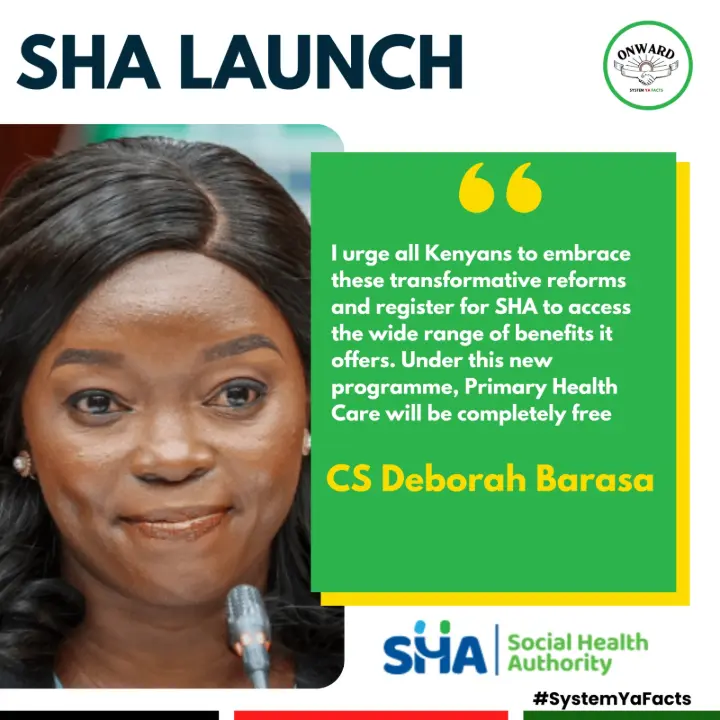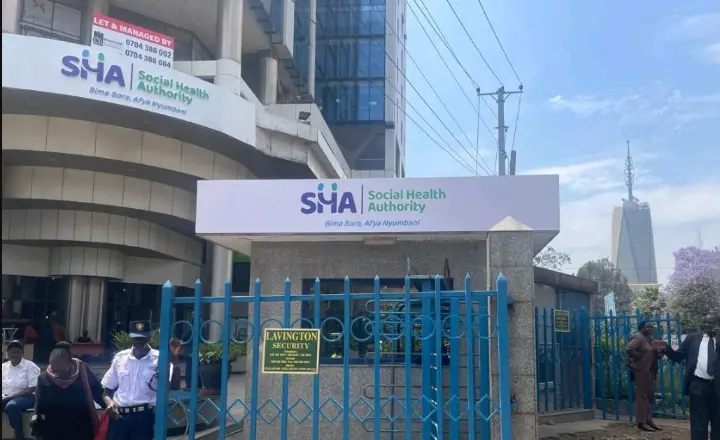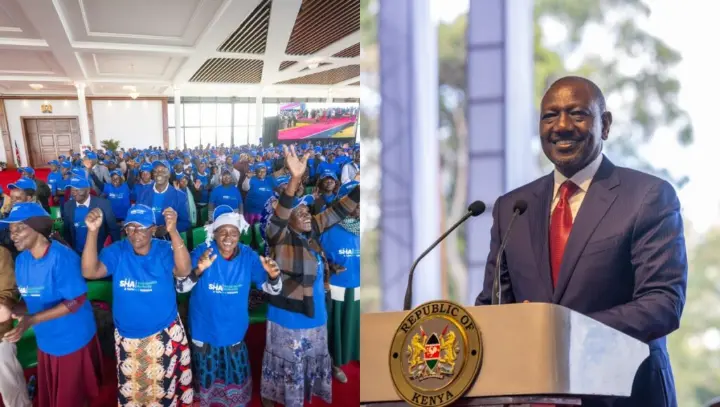Introduction
Launched in October 2024, Kenya’s Social Health Authority (SHA) aims to provide universal health coverage under the Taifa Care policy. Half a year in, there are clear gains and some persistent challenges. This post summarizes the achievements made so far, the obstacles that remain, and what to watch in the near future.

What Has Been Achieved
-
High Registration Numbers
- As of February 2025, over 19.3 million Kenyans had registered with SHA. Ministry of Health Kenya+1
- By early 2025, out of the 19+ million registered, about 3.33 million had undergone means-testing to determine their premium obligations. Ministry of Health Kenya+2Ministry of Health Kenya+2
-
Health Facilities Enrolment & Digital Access
- Approximately 8,813 out of 17,755 active health facilities (≈ 56%) are enrolled under SHA. Ministry of Health Kenya+1
- Of those enrolled, about 89% have successfully accessed the SHA system. Ministry of Health Kenya+1
-
Access to Primary Healthcare Services
- Since rollout, over 1 million Kenyans have accessed primary healthcare through SHA. Ministry of Health Kenya+1
-
Financial Flows & Claims Processing
- SHA has collected KSh 20.9 billion since October 2024 and has processed and paid out about KSh 18.2 billion in claims to both public and private facilities. The Star+1
- In October 2024 alone, out of claims totaling KSh 2.6 billion submitted by 2,382 hospitals, SHA disbursed KSh 1.36 billion, covering more than 52% of October’s claim value. The Star+1

Key Challenges
-
Means Testing and Contribution Assessment
- While registration is high, only about 3.33 million registrants have completed means testing, leaving many users uncertain about premiums or benefit entitlements. Ministry of Health Kenya+2Ministry of Health Kenya+2
-
Delays & Partial Payments to Facilities
- Many health facilities contracted under SHA have reported delays in payments. A survey conducted by the Rural & Urban Private Hospitals Association (RUPHA) found that 58% of facilities did not receive any payment for claims submitted in the last quarter of 2024. Citizen Digital+2Capital FM+2
- Among those paid, only a small minority (≈ 6%) received payments that covered over 80% of their submitted claims. Citizen Digital+1
-
Geographical & Temporal Gaps in Registration
- Some counties, such as Turkana, West Pokot, and Samburu, have significantly lower registration rates. The Star+2Ministry of Health Kenya+2
- Registration activity dips over weekends relative to weekdays. Ministry of Health Kenya+1
-
Financial Strain on Health Providers
- According to reports, 91% of contracted facilities reported financial distress, including difficulty paying staff, sourcing drugs, and covering operational costs. Business Daily Africa

What To Watch Going Forward
- Improving Means Testing: Speeding up assessment for all registrants to clarify their contribution obligations and benefit levels.
- Timely Claims Payment: Ensuring that facilities receive payments more quickly and in full where possible, especially for primary and rural health clinics.
- Greater Geographic Equity: Strengthening outreach in underserved counties to close regional gaps.
- Transparency & Accountability: Continued publication of payment data, facility lists, and audit results to build stakeholder trust.

Conclusion
Kenya’s SHA has made substantial progress in registration, facility enrolment, and financial flows. However, for the program to deliver its full promise, challenges around payment delays, means testing, and geographic disparities must be actively addressed. The next few months will be critical in determining whether SHA becomes transformative or falls short of its goals.

— ✍️Written by: Kelvin Wambua Kang'alya
📸 Founder, Rshots.com – Where Passion Meets Perspective
💡 Topics: Kenya Social Health Authority 2025, SHA Kenya review, universal health coverage Kenya, SHA progress report, SHA challenges Kenya, health insurance Kenya, Kenya healthcare reform
💬 Got thoughts on this post? Share your feedback
Kenya’s Social Health Authority: Progress & Challenges Mid-2025